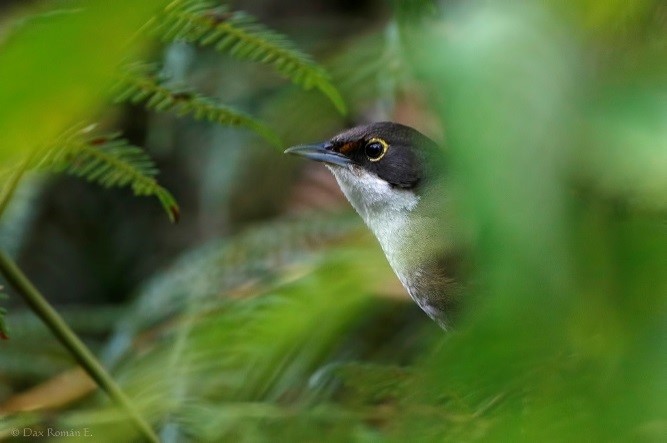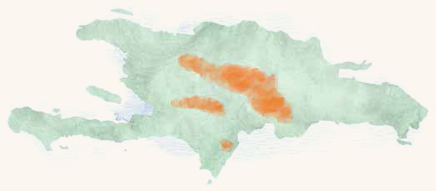Birdfinding.info ⇒ The most reliable known site for this secretive and little-studied species is Cachote in the Bahoruco Oriental, where it is locally common in the cloud forest understory. It has also been found regularly in the Cordillera Central at Ébano Verde Scientific Reserve and Valle Nuevo National Park.
Eastern Chat-Tanager
Calyptophilus frugivorus
Endemic to Hispaniola, and may now be confined to the Dominican Republic, where it is a localized resident of humid montane forests.
The subspecies neibei persists locally in the eastern Cordillera Central, the Sierra de Neiba (west to the vicinity of the Haitian border), the Sierra de Martín García, and the easternmost portion of the Sierra de Bahoruco—i.e., the Bahoruco Oriental.
The nominate subspecies was formerly resident in the northeastern lowlands of the Dominican Republic from Las Colinas to the Samaná Peninsula, but has not been reported in recent years and is thought to be extinct.
Identification
A wrenlike bird that is dark brown above, with a bright white throat, grayish breast, and warm-brown flanks. It moves restlessly through the understory, usually in pairs.

Eastern Chat-Tanager. (Ébano Verde Scientific Reserve, Dominican Republic; March 24, 2016.) © Dax M. Román E.
Much of the orbital skin is bright yellow, which differentiates it from Western Chat-Tanager, but both species have a small yellow crescent in front of the eye—this is often concealed and becomes most visible during displays.
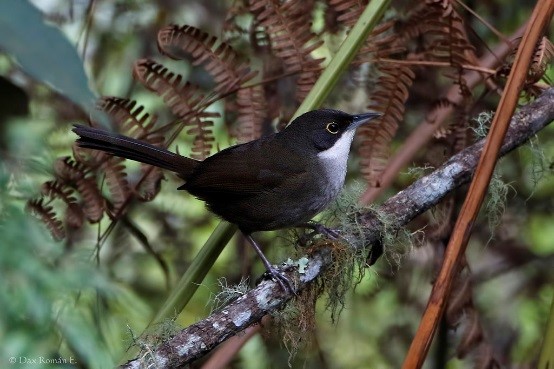
Eastern Chat-Tanager. (Ébano Verde Scientific Reserve, Dominican Republic; March 24, 2016.) © Dax M. Román E.
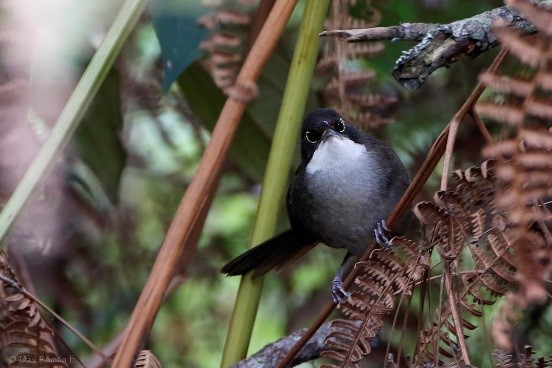
Eastern Chat-Tanager. (Ébano Verde Scientific Reserve, Dominican Republic; March 24, 2016.) © Dax M. Román E.
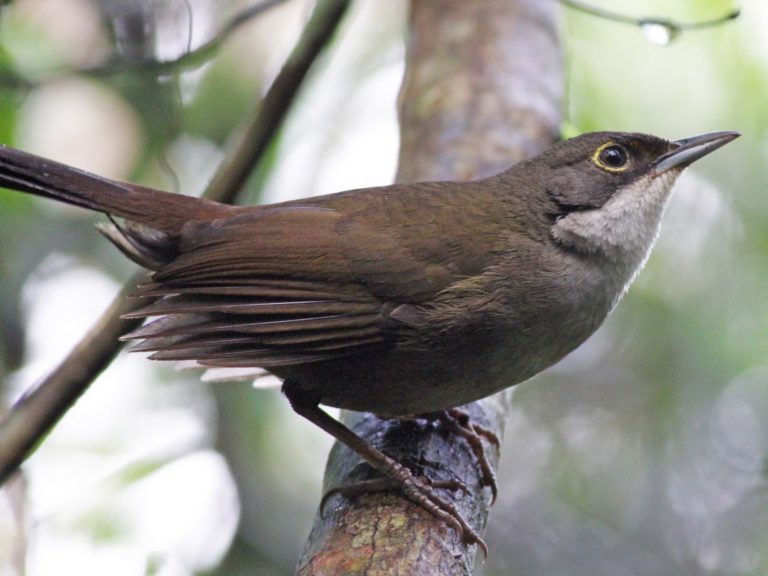
Eastern Chat-Tanager. (Monumento Natural Miguel Domingo Fuerte, Dominican Republic; March 30, 2012.) © Ian Davies
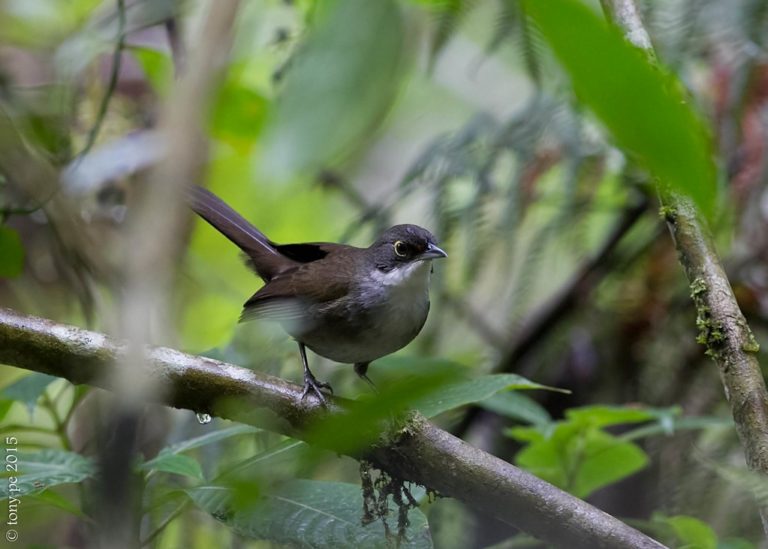
Eastern Chat-Tanager. (Cordillera Central, Dominican Republic; January 28, 2015.) © Tony Pe
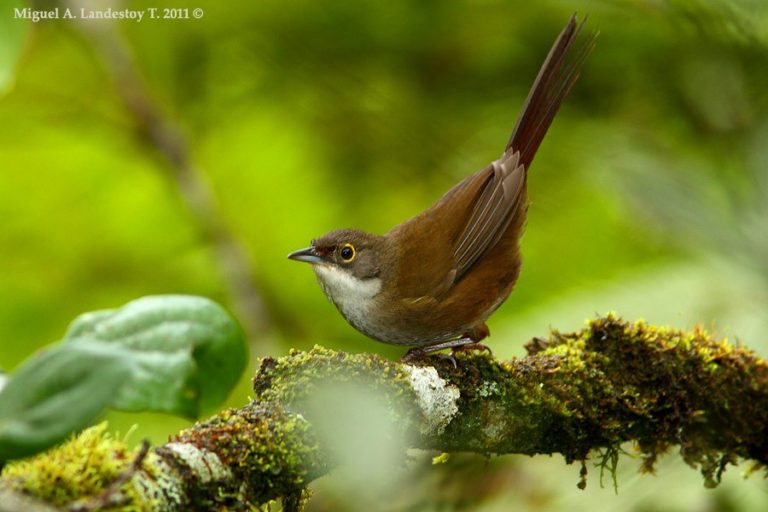
Eastern Chat-Tanager. (Cachote, Dominican Republic; February 13, 2011.) © Miguel A. Landestoy T.

Eastern Chat-Tanager. (Cachote, Dominican Republic; February 1, 2014.) © Dubi Shapiro

Eastern Chat-Tanager. (Ébano Verde Scientific Reserve, Dominican Republic; March 24, 2016.) © Dax M. Román E.

Eastern Chat-Tanager. (Sierra de Neiba, Dominican Republic; August 31, 2008.) © Miguel A. Landestoy T.
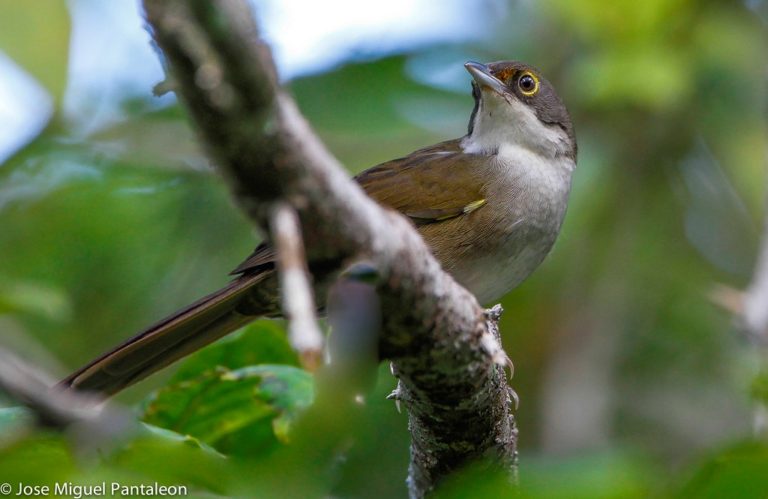
Eastern Chat-Tanager. (Cachote, Dominican Republic; February 13, 2011.) © José Miguel Pantaleón
Cf. Western Chat-Tanager. Eastern and Western Chat-Tanagers occur within a few miles of each other in the Sierra de Bahoruco, but are not known to occur at any of the same sites. Western is about 15% longer, much more robust than Eastern, and has dark or plain gray orbital skin, whereas Eastern’s is bright yellow.
They also differ noticeably in posture and behavior: Western has the bearing of a thrush or thrasher, whereas Eastern often cocks its tail and twitches like a wren. Western’s vocalizations are slower and mellower than Eastern’s.
Notes
Polytypic species consisting of two recognized subspecies: frugivorus (presumed extinct) and neibae (sometimes incorrectly written as neibei; it is based on the place name Neiba).
Formerly considered conspecific with Western Chat-Tanager, together comprising the Chat Tanager, C. frugivorous.
IUCN Red List Status: Near Threatened.
References
Alas & Colores: Eastern Chat-Tanager (Calyptophilus frugivorus), https://alasycolores.com.do/en/aves/chirri-de-la-cordillera-central.
Almonte, J.; Fernández, E. 2002. Eastern Calyptophilus frugivorus and Western Chat-tanagers C. tertius. Cotinga 17: 95-96.
BirdLife International. 2018. Calyptophilus frugivorus. The IUCN Red List of Threatened Species 2018: e.T22731255A132033840. http://dx.doi.org/10.2305/IUCN.UK.2018-2.RLTS.T22731255A132033840.en. (Accessed June 2, 2019.)
eBird. 2019. eBird: An online database of bird distribution and abundance. Cornell Lab of Ornithology, Ithaca, N.Y. http://www.ebird.org. (Accessed June 2, 2019.)
Hilty, S., and E. de Juana. 2017. Eastern Chat-tanager (Calyptophilus frugivorus). In: del Hoyo, J., A. Elliott, J. Sargatal, D.A. Christie, and E. de Juana (eds.). Handbook of the Birds of the World Alive. Lynx Edicions, Barcelona. http://www.hbw.com/node/61849. (Accessed October 23, 2017.)
Latta, S., C. Rimmer, A. Keith, J. Wiley, H. Raffaele, K. McFarland, and E. Fernandez. 2006. Birds of the Dominican Republic and Haiti. Princeton University Press, Princeton, N.J.
Raffaele, H., J. Wiley, O. Garrido, A. Keith, and J. Raffaele. 1998. A Guide to the Birds of the West Indies. Princeton University Press, Princeton, N.J.
